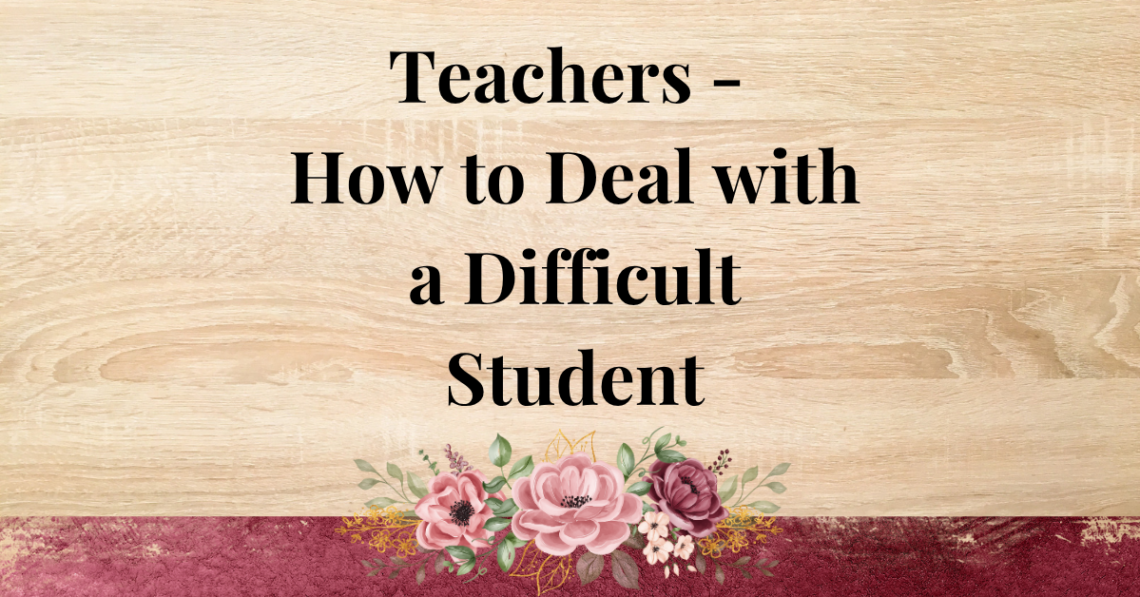Every teacher, no matter how experienced, will eventually face a challenging student. Whether it’s a student who disrupts the class, refuses to participate, or openly challenges authority, knowing how to deal with a difficult student is crucial for maintaining a positive learning environment. Here are some effective strategies to help you navigate these challenges with grace and professionalism.
1. Stay Calm and Composed
When dealing with a difficult student, your first instinct might be to react emotionally. However, staying calm is essential. Take a deep breath, keep your voice steady, and remember that your response sets the tone for the rest of the class. Losing your temper will only escalate the situation.
2. Build a Relationship
Often, difficult behavior stems from underlying issues that have nothing to do with you. Take time to understand the student’s background, interests, and challenges. A small conversation outside of class can make a big difference in how to deal with a difficult student. When students feel heard and valued, they are more likely to respond positively to your guidance.
3. Set Clear Expectations
From the first day of class, establish clear rules and expectations. Be consistent in enforcing them. If a student repeatedly challenges the rules, remind them of the expectations and consequences in a firm but respectful manner. Consistency is key in maintaining a structured classroom.
4. Address Behavior Privately
Correcting a student’s behavior in front of their peers can lead to embarrassment and defensiveness. Instead, have a private conversation to discuss their behavior. This approach allows the student to express their concerns without feeling like they are being publicly shamed.
5. Use Positive Reinforcement
Reinforce good behavior by acknowledging improvements and effort. Praise students when they demonstrate positive actions, no matter how small. Positive reinforcement can be a powerful tool when figuring out how to deal with a difficult student.
6. Offer Choices
Giving students choices can help them feel a sense of control. Instead of issuing commands, provide options that lead to the same desired outcome. For example, instead of saying, “Stop talking now,” you can say, “Would you like to continue this discussion after class or return to your assignment now?”
7. Involve Parents or Guardians
If a student’s behavior continues to be a challenge, communicate with their parents or guardians. Approach the conversation as a team effort rather than just reporting negative behavior. Discuss strategies that could work both at home and in the classroom.
8. Seek Support from Colleagues and Administration
You’re not alone in dealing with challenging students. Other teachers and administrators may have valuable insights and strategies. Collaborating with your colleagues can provide fresh perspectives on how to deal with a difficult student.
9. Focus on Solutions, Not Punishment
While consequences are sometimes necessary, the goal should always be to guide the student toward better behavior rather than just punishing them. Find ways to help the student develop self-discipline and accountability.
10. Take Care of Yourself
Dealing with difficult students can be emotionally draining. Prioritize self-care, whether it’s through prayer, exercise, or engaging in activities you enjoy. A well-rested and mentally strong teacher is better equipped to handle classroom challenges.
Final Thoughts
Understanding how to deal with a difficult student takes patience, strategy, and compassion. By staying calm, building relationships, setting expectations, and seeking support when needed, you can create a classroom environment where all students—no matter how challenging—can learn and grow. If you’ve encountered difficult students, what strategies have worked for you? Share your thoughts in the comments below!
I’d love to hear from you! Have you faced a challenging student in your classroom? What strategies worked best for you? Share your experiences in the comments and let’s discuss ways to support one another in creating positive learning environments!





